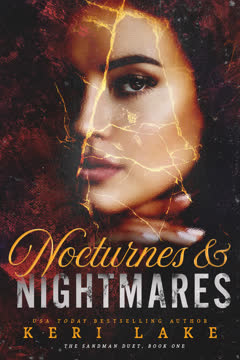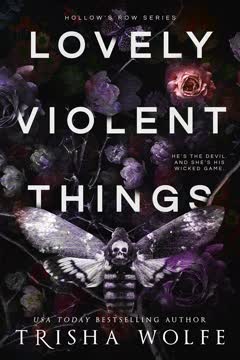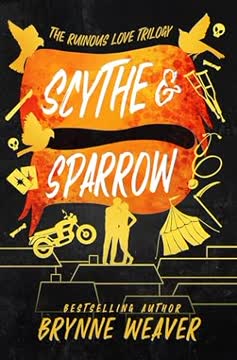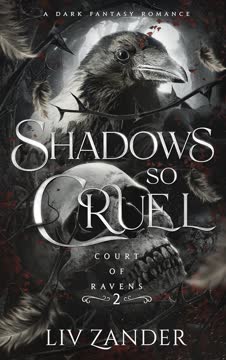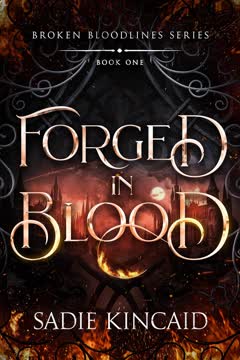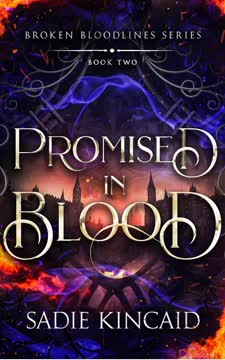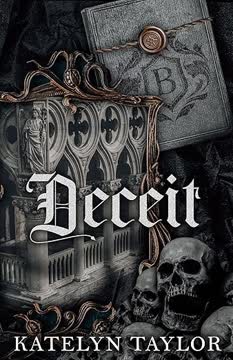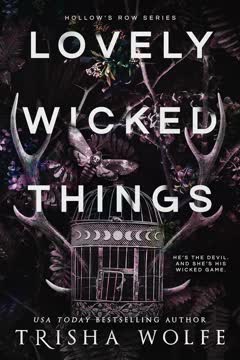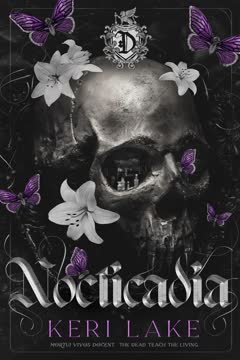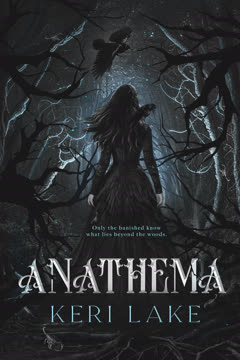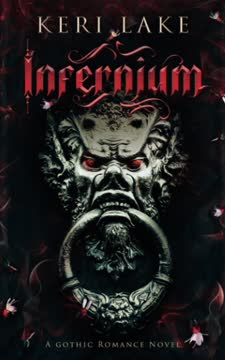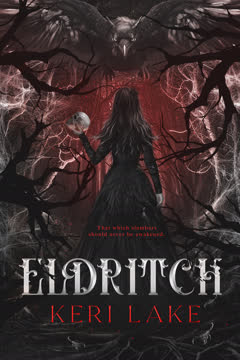Plot Summary
Nightmares and New Beginnings
Voss is tormented by violent dreams rooted in his abusive childhood, where his uncle Carl's sadism and his own capacity for violence haunt him. Nola, a single mother, tries to build a new life for herself and her son Oliver after her husband's murder. Their lives intersect when Voss, a mysterious tenant with a dark past, moves into Nola's in-law suite. Both are drawn to each other, their chemistry undeniable, but their connection is shadowed by secrets and the threat of violence lurking in their histories. The story opens with a sense of foreboding, as both characters struggle to find safety and meaning in a world that has repeatedly betrayed them.
Tensions and Temptations
Nola and Voss's relationship intensifies, blending sexual tension with emotional vulnerability. Nola's attempts to protect her son from the world's cruelty clash with Voss's belief in teaching Oliver to defend himself. Their arguments reveal deep wounds—Nola's fear of losing control and Voss's conviction that only strength ensures survival. The push and pull between them is both physical and psychological, culminating in moments of passion that blur the line between pleasure and pain. Their intimacy is fraught, exposing their mutual need for connection and the ways trauma shapes their desires.
Violence at the Edges
Oliver, Nola's son, is suspended from school after using a self-defense move Voss taught him. This incident exposes the cracks in Nola's carefully constructed world and brings her into direct conflict with Voss. The episode forces Nola to confront the reality that violence is never far from her family, and that her efforts to shield Oliver may be futile. Voss's presence becomes both a comfort and a threat, as Nola grapples with the possibility that he is more dangerous than she wants to admit. The tension between protection and empowerment becomes a central theme.
Secrets and Suspicion
Nola discovers evidence that Voss may be connected to her husband's murder and the string of local killings attributed to the Sandman. Her trust in him is shattered, and she turns to her brother Jonah, a police officer, for help. The revelation that Voss possesses her late husband's watch and files on her deepens her suspicion. Meanwhile, Voss's own investigation into the Sandman killer intensifies, as he realizes the threat is closer than anyone suspects. The web of secrets tightens, and the line between hunter and hunted blurs.
The Vanishing
Oliver is abducted, sending Nola into a spiral of panic and guilt. The community rallies to search for him, but leads are scarce. Nola's past trauma resurfaces, echoing the disappearance of her own sister years before. Voss, determined to find Oliver, suspects his sadistic uncle Carl is behind the kidnapping, using the boy as bait in a twisted game. The stakes become personal for Voss, who is haunted by memories of his own childhood abuse and failures. Nola's grief and desperation threaten to consume her, as she faces the possibility of losing her son forever.
The Past Resurfaces
Voss reveals to Nola the truth about his past: his uncle Carl was responsible for the abduction and death of Nola's sister, Nora. Voss tried to save her but failed, and the guilt has haunted him ever since. This confession forges a painful bond between Voss and Nola, as they realize their lives have been intertwined by violence and loss. The revelation reframes the present danger, making the hunt for Oliver not just a rescue mission, but a reckoning with the past. Nola must confront the reality of her sister's fate and the darkness that has shaped both her and Voss.
Descent into Darkness
The narrative shifts to the perspective of the Sandman, who is revealed to be Simon, a taxidermist with a twisted sense of purity and ritual. Simon's obsession with control, his fixation on women's eyes, and his ritualistic killings are explored in chilling detail. He keeps Oliver captive, alternating between moments of calculated kindness and threats of violence. Simon's psychological unraveling is mirrored by Nola's descent into despair, as she struggles to maintain hope. The story delves into the mind of a killer, exposing the roots of his pathology and the legacy of abuse that shaped him.
The Sandman's Game
Voss and Nola, each in their own way, pursue the Sandman. Voss investigates the Conservatory, suspecting a connection between the killer and the taxidermy department. Nola receives cryptic messages and is lured into a trap, believing she can trade herself for Oliver's life. The Sandman manipulates both, orchestrating a series of encounters designed to break their spirits and assert his dominance. The tension escalates as the boundaries between victim and survivor blur, and the true nature of the Sandman's game becomes clear: it is not just about killing, but about control, legacy, and revenge.
Shattered Trust
Nola's trust in everyone around her is shattered as she is manipulated and betrayed by those she thought she could rely on. The discovery of more victims, including friends and neighbors, deepens her sense of isolation. The community's support feels hollow, and Nola is forced to confront the reality that she may be alone in her fight. Her relationship with Voss is tested to its limits, as secrets and lies threaten to destroy the fragile bond they have built. The emotional toll of the ordeal pushes Nola to the edge of despair, but also steels her resolve to fight for her son.
The Hunt for Oliver
Armed with new information, Voss and Nola close in on the Sandman's lair. The search is fraught with danger, as they navigate a landscape of traps, false leads, and psychological warfare. Voss's skills as a hunter and killer are put to the test, as he confronts the legacy of his family's violence. Nola, drawing on reserves of strength she didn't know she had, refuses to be a passive victim. The rescue mission becomes a crucible, forging a new sense of purpose and agency for both characters. The confrontation with the Sandman is brutal and cathartic, forcing each to face their deepest fears.
The Conservatory's Shadows
The investigation leads to the Conservatory, where the Sandman's true identity and history are revealed. Simon, the product of generational abuse and neglect, has been reenacting the rituals of his father and uncle, seeking validation and control through violence. The Queen of the Night flower, a symbol of fleeting beauty and death, becomes central to his rituals. The final confrontation exposes the full extent of Simon's madness and the ways in which trauma is passed down and transformed. Voss and Nola must navigate the moral complexities of justice and vengeance, as they decide the Sandman's fate.
The Queen of the Night
Nola is captured and subjected to Simon's sadistic rituals, forced to choose between her own life and Oliver's. The Queen of the Night blooms as a symbol of both hope and doom. Voss, wounded but relentless, infiltrates the lair and confronts Simon in a battle of wills and bodies. The rescue is fraught with peril, as Voss and Nola must outwit and overpower a killer who has anticipated their every move. The climax is both violent and redemptive, as the cycle of abuse and revenge is finally broken—at least for now.
Breaking Points
The aftermath of the rescue leaves all characters changed. Simon is left alive but mutilated, a living testament to the horrors he inflicted. Voss and Nola, though victorious, are scarred by the ordeal. The cost of survival is high, and the boundaries between justice and vengeance are blurred. Oliver, traumatized but alive, begins the slow process of healing. The community grapples with the revelation of the Sandman's identity and the extent of his crimes. The story lingers on the question of whether true closure is possible, or if some wounds can never fully heal.
Revelations and Rescue
In the wake of the ordeal, Voss and Nola confront the truths about themselves and each other. Their relationship, forged in trauma, becomes a source of healing and hope. Nola reconciles with her brother Jonah, and Oliver begins to speak again, signaling the possibility of recovery. The family, though battered, emerges stronger and more united. Voss, once an outsider, finds a place in their lives, and the promise of a new beginning takes root. The narrative shifts from survival to the possibility of happiness, even in the shadow of past horrors.
Aftermath and Reckoning
Simon's fate is left in Voss's hands, and the question of justice is complicated by the legacy of violence that shaped them all. The community seeks closure, but the scars of the Sandman's crimes linger. Voss and Nola must decide what kind of future they want to build, and whether they can escape the cycles of abuse and revenge that have defined their lives. The story acknowledges the complexity of healing, the persistence of trauma, and the necessity of choosing hope in the face of darkness.
Healing and Hope
Time passes, and the characters begin to rebuild. Nola and Voss's relationship deepens, and the possibility of a new child signals hope for the future. Oliver, though changed, finds moments of joy and connection. The family, once fractured by loss and violence, begins to heal. The narrative emphasizes the importance of love, resilience, and the willingness to confront the past in order to build a better future. The story ends on a note of cautious optimism, acknowledging that healing is a process, not a destination.
The Predator's End
Voss takes Simon to his own lair, meting out a slow and deliberate punishment that mirrors the suffering Simon inflicted on others. The act is both retribution and catharsis, a way for Voss to reclaim agency and break the cycle of victimhood. The scene is brutal, but it serves as a final reckoning for the horrors of the past. Voss's actions raise questions about the nature of justice and the limits of forgiveness, leaving the reader to ponder the true cost of vengeance.
The Game Never Ends
The story closes with the revelation that Carl, the original architect of the family's violence, is still alive and plotting from the shadows. The cycle of trauma and revenge is not fully broken, and the threat of new horrors looms. The final message—"Want to play a game?"—serves as a reminder that evil is never fully vanquished, and that the struggle for safety, justice, and healing is ongoing. The ending is both satisfying and unsettling, leaving the door open for future reckonings.
Characters
Voss (Barrett Voselick)
Voss is a man forged in violence, shaped by an abusive childhood under the sadistic rule of his uncle Carl and a complicit grandfather. Scarred physically and emotionally, he becomes a skilled killer and investigator, using his talents to hunt predators. His relationship with Nola is both redemptive and fraught, as he struggles to reconcile his capacity for violence with his longing for connection and purpose. Voss is driven by guilt over his failure to save Nola's sister and by a fierce need to protect those he loves. His journey is one of self-forgiveness, as he learns to channel his darkness into acts of justice rather than destruction. Voss's development is marked by vulnerability, loyalty, and a willingness to confront his own demons for the sake of others.
Nola Tensley
Nola is a woman marked by loss—her sister's disappearance, her husband's murder, and the abduction of her son. She is fiercely protective of Oliver, determined to shield him from the world's cruelty even as she battles her own trauma. Nola's relationship with Voss challenges her to confront uncomfortable truths about violence, agency, and desire. She is both vulnerable and strong, capable of deep empathy and fierce resolve. Nola's arc is one of empowerment, as she moves from victimhood to agency, reclaiming her life and her family in the face of overwhelming odds. Her psychological depth is revealed in her struggles with trust, guilt, and the need for connection.
Oliver Tensley
Oliver is the emotional heart of the story, his innocence and vulnerability driving the actions of the adults around him. Traumatized by his father's death and his own abduction, Oliver's silence and eventual recovery symbolize the possibility of healing. His relationship with Voss is complex, blending fear, admiration, and the longing for a father figure. Oliver's resilience is tested, but his survival and gradual return to speech offer hope for the future. He represents both the cost of violence and the potential for renewal.
Simon Jeffries (The Sandman)
Simon is the embodiment of inherited trauma, his sadism and ritualistic killings rooted in the legacy of his father and uncle. A taxidermist obsessed with purity and control, Simon's crimes are both personal and symbolic. His psychological unraveling is depicted with chilling detail, exposing the ways in which abuse begets abuse. Simon's relationship with his victims is marked by a perverse need for validation and dominance. His ultimate defeat is both a victory for the survivors and a commentary on the limits of justice.
Carl Jansen
Carl is the shadowy figure whose cruelty sets the events of the story in motion. Abusive, manipulative, and sadistic, he is both Voss's uncle and, as revealed, his half-brother. Carl's influence lingers even in his absence, shaping the actions and psyches of those he has harmed. His survival at the end of the story hints at the persistence of evil and the difficulty of breaking free from cycles of abuse. Carl is a symbol of the darkness that haunts families and communities, his legacy a challenge to the possibility of healing.
Jonah Stiever
Jonah is Nola's older brother, a police officer committed to justice and the safety of his family. His relationship with Nola is marked by both support and conflict, as he struggles to balance his professional duties with his personal loyalties. Jonah's skepticism of Voss and his determination to find Oliver make him a key player in the search for the truth. He represents the limits of institutional justice and the challenges of confronting evil within the bounds of the law.
Nora Stiever
Nora's disappearance and death are the original trauma that shapes Nola's life. Her fate, revealed through Voss's confession, is a source of pain and guilt for both protagonists. Nora's memory haunts the narrative, her loss a reminder of the stakes and the cost of inaction. She is both a victim and a catalyst, her story driving the search for justice and closure.
Dale
Dale is a local figure who serves as a red herring in the investigation, his actions and presence raising suspicion but ultimately proving to be a misdirection. His role highlights the dangers of misplaced trust and the complexities of small-town relationships. Dale's character underscores the theme of appearances versus reality, and the difficulty of discerning truth in a world of secrets.
Beth and Harv
Beth and Harv are among the Sandman's victims, their fates serving as warnings and motivators for the protagonists. Their deaths deepen the sense of danger and loss, and their relationships with Nola and the community add emotional weight to the story. They represent the collateral damage of unchecked violence and the vulnerability of ordinary people.
Simon's Mother
Though largely offstage, Simon's Mother is a significant influence on his psyche. Her own victimization and neglect contribute to Simon's pathology, and her presence in his memories and rituals underscores the theme of generational abuse. She is both a victim and an unwitting accomplice, her failures echoing through the lives of her son and his victims.
Plot Devices
Interwoven Timelines and Flashbacks
The narrative employs interwoven timelines and flashbacks to gradually reveal the characters' histories and the roots of their trauma. Voss's memories of childhood abuse, Nola's recollections of her sister's disappearance, and Simon's origin story are all unveiled in fragments, building suspense and deepening psychological complexity. This structure allows the reader to experience the characters' confusion and revelation alongside them, heightening emotional engagement and thematic resonance.
Unreliable Narration and Misdirection
The story frequently employs unreliable narration and misdirection, both in the perspectives of traumatized characters and in the investigation of the Sandman's identity. Red herrings, false leads, and shifting suspicions create a sense of uncertainty and paranoia. The reader, like the characters, is forced to question appearances and motives, mirroring the psychological disorientation of trauma survivors.
Symbolism of the Queen of the Night
The Queen of the Night flower recurs as a central symbol, representing both the allure and danger of the killer's rituals. Its rare, nocturnal bloom parallels the fleeting moments of hope and the ever-present threat of violence. The flower's association with purity, transformation, and mortality deepens the story's exploration of trauma, healing, and the search for meaning in suffering.
Cycles of Violence and Generational Trauma
The plot is driven by cycles of violence, with each generation inheriting and transforming the wounds of the past. The legacy of Carl's abuse shapes Voss, Simon, and their victims, while Nola's family is haunted by unresolved grief. The story interrogates the possibility of breaking these cycles, asking whether healing and justice are truly attainable or if some darkness is inescapable.
Psychological Realism and Intimacy
The narrative delves deeply into the psychological states of its characters, using close third-person and first-person perspectives to convey fear, desire, guilt, and hope. Intimate scenes—both sexual and violent—are rendered with emotional honesty, blurring the boundaries between pleasure and pain, love and obsession. This psychological realism grounds the story's suspense and horror in authentic human experience.
Foreshadowing and Open-Ended Resolution
The story is laced with foreshadowing, from early nightmares to cryptic messages and unresolved threats. The final chapters and epilogue leave the door open for future conflict, suggesting that the struggle against evil is ongoing. The open-ended resolution invites readers to reflect on the nature of justice, the persistence of trauma, and the possibility of redemption.
Analysis
Requiem & Reverie is a dark, psychologically rich thriller that explores the enduring impact of trauma and the complexities of survival. Through its interwoven narratives and deeply flawed characters, the novel interrogates the boundaries between victim and survivor, justice and vengeance, love and obsession. The story's central relationships—between Voss and Nola, parent and child, predator and prey—are fraught with ambiguity, reflecting the messy realities of healing and the persistence of darkness. The Queen of the Night flower, with its brief, beautiful bloom, serves as a potent symbol of hope amid suffering, while the cycles of violence that drive the plot challenge the possibility of closure. Ultimately, the novel suggests that healing is possible but never complete, and that the fight against evil—both within and without—is ongoing. The open-ended conclusion, with its chilling hint of unfinished business, underscores the story's central lesson: that the past is never truly past, and that the struggle for safety, justice, and love is a lifelong endeavor.
Last updated:
Review Summary
Requiem & Reverie is the thrilling conclusion to The Sandman Duet, receiving mostly positive reviews. Readers praised the intense suspense, dark themes, and complex characters. Many found the plot twists engaging, though some felt the villain's identity was predictable. The relationship between Nola and Voss garnered mixed reactions, with some enjoying their chemistry while others found it rushed. The book's ending was particularly divisive, with some loving the open-ended conclusion and others wanting more closure. Overall, fans of dark romantic thrillers appreciated the author's ability to keep them on edge.
Sandman Series
Similar Books
Download PDF
Download EPUB
.epub digital book format is ideal for reading ebooks on phones, tablets, and e-readers.

